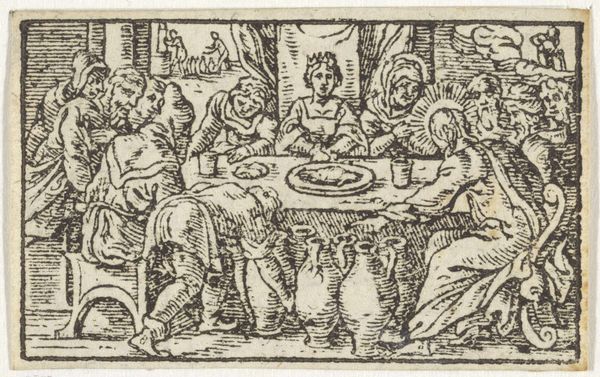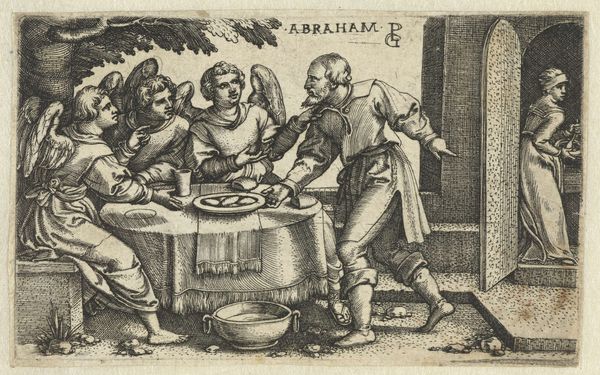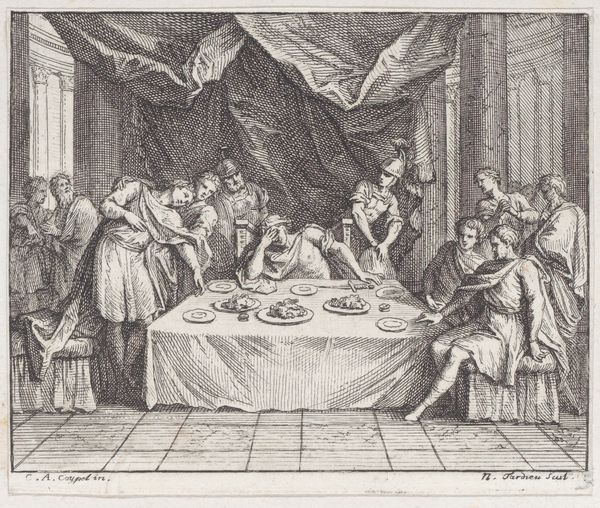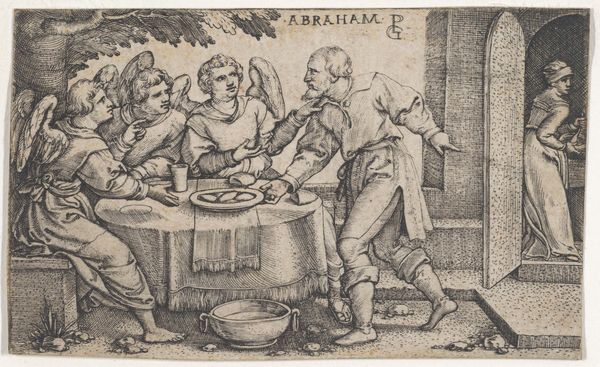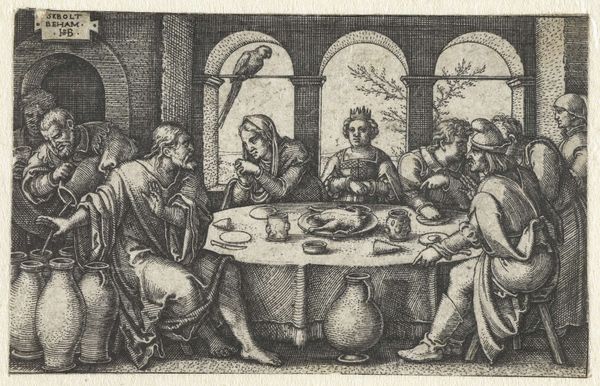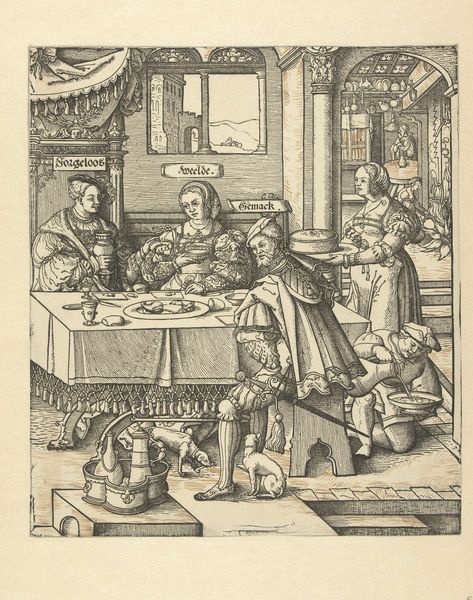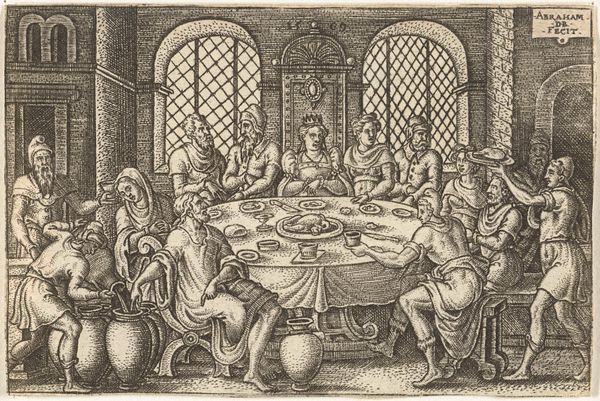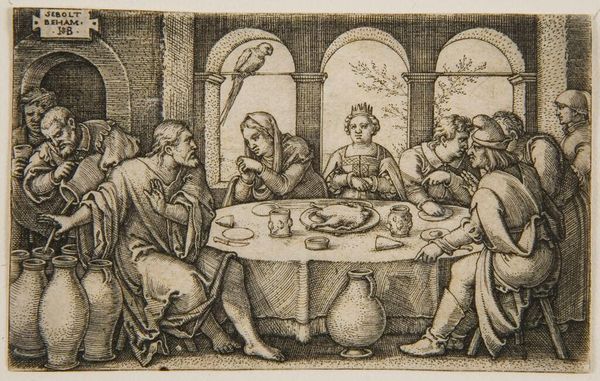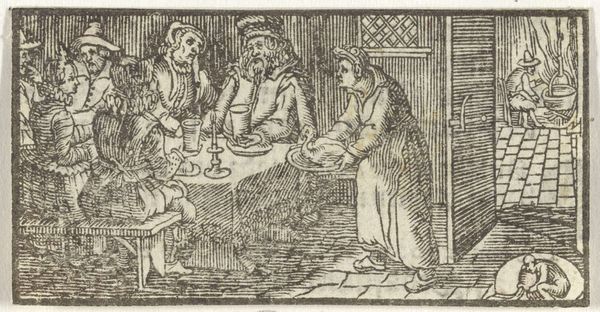
print, engraving
# print
#
old engraving style
#
figuration
#
line
#
genre-painting
#
history-painting
#
northern-renaissance
#
engraving
Dimensions: height 37 mm, width 58 mm
Copyright: Rijks Museum: Open Domain
Editor: This is Georg Pencz's "Wedding at Cana," an engraving from 1534-1535. I’m immediately struck by the contrast between the almost chaotic energy of the figures and the precise detail of the engraving itself. What can you tell me about its cultural significance at the time? Curator: Well, considering Pencz's involvement with the Reformation, it's impossible to ignore the political undercurrent. This image isn’t just depicting a Bible story; it's participating in debates about ritual, authority, and the nature of the miraculous. Note how the abundance of water jugs directly contrasts with the relatively spare setting. What do you think that signifies within that historical context? Editor: Maybe it’s a statement about lavish displays versus a more modest spirituality? Or is it simply emphasizing the scale of the miracle? Curator: Precisely. The print functions in a socio-political landscape where imagery itself was weaponized. Each element could be read and debated within circles adhering to different theological positions. Consider the implied viewers: How would, say, a staunch Catholic interpret this, compared to someone embracing the Reformation's ideals? The public role of art was immense, and Pencz's work sits squarely in that arena. Editor: So the ‘miracle’ isn’t just a religious event, it’s a flashpoint in a much larger cultural argument made visible through art? Curator: Absolutely! By depicting this event in this way, Pencz inserts himself into a public discourse about faith and authority. The artwork itself becomes a political act. How do you feel this interpretation alters your perception of the work now? Editor: It gives it so much more weight. I was initially drawn to the artistic technique, but understanding its role in Reformation debates really enriches its meaning. It makes me consider what’s beneath the surface in art from this period. Curator: Indeed, it shows that even seemingly straightforward biblical scenes are imbued with political potency and reveals the power of art in shaping public opinion.
Comments
No comments
Be the first to comment and join the conversation on the ultimate creative platform.

